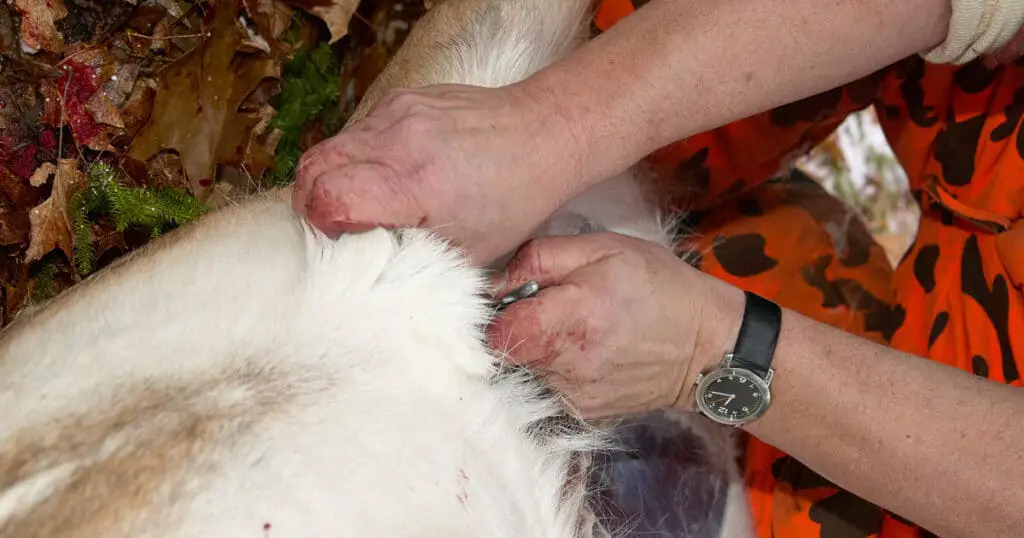When you hunt deer and take down one of these animals, you must gut it as a part of the field dressing process. That is because if you leave the guts in, bacteria will contaminate the meat (venison). But how do you go about this process? Keep reading for our complete guide to how to gut a deer.
Removing the organs is necessary because it reduces the temperature of the deer carcass. This temperature reduction helps to temporarily preserve the deer carcass so bacteria doesn’t proliferate during the time it takes to get to a meat processor.
Here is an overview of what we’ll discuss here:
- Tools and equipment for gutting a deer
- Step-by-step: How to gut a deer
- What to do after gutting a deer
- Transporting the deer
- What should you do with leftover remains?
Let’s learn all about gutting a deer.
Tools and Equipment for Gutting a Deer
Table of Contents
ToggleThere are certain tools and pieces of equipment you will need to have on hand when you have to gut a deer. Make sure you have all these with you and ready to go when you go hunting.
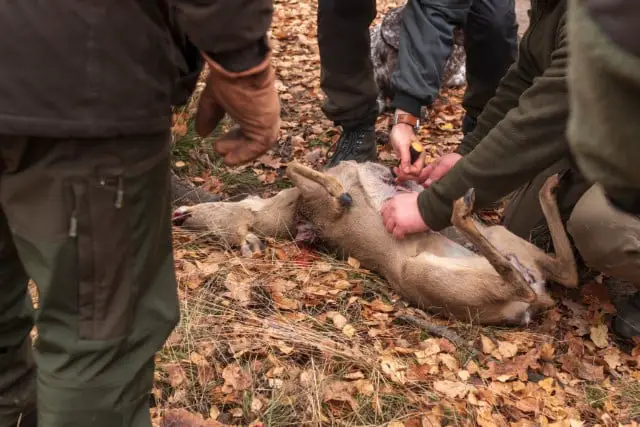
This is important because you have to start the field dressing process immediately after killing the deer.
Knife (or Knives)
Use a sharp and sturdy knife (or knives) for gutting deer. Choose knives with a top-quality blade that will stay sharp for the long haul.
Rope and Gambrel
A gambrel is a piece of equipment that lets you hang up the deer, making it easier for you to gut the deer while keeping it off the ground.
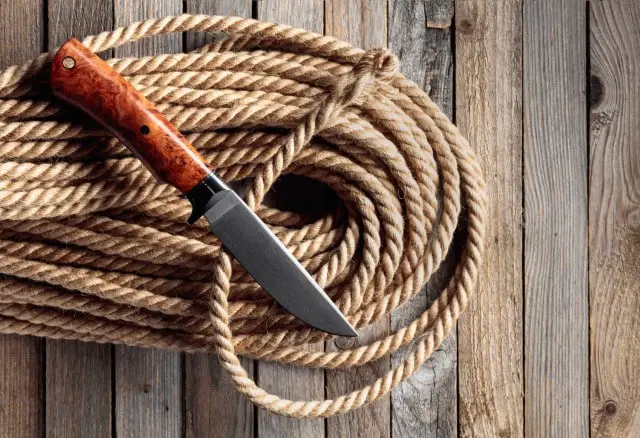
This is important, as the meat can easily get contaminated if you try to gut a deer on the dirt.
Rubber Gloves
You should have at least a few pairs of rubber gloves in your field-dressing kit.
While one pair might be enough, you should have an extra on hand in case you want to change over.
If you want to make things easier and to have access to a wider range of knives, you can purchase a complete Game Processing Kit.
What is a Game Processing Kit?
A good Game Processing Kit will come with all the knives and other tools you require to fully field-dress and gut a deer. However, you will still need to add in the rope and gambrel, and whatever other items aren’t included.
Having more than one knife on hand is useful because sometimes different knife sizes and designs can be useful for different parts and aspects of the deer gutting process.
Step-by-Step: How to Gut a Deer
Let’s go over the process of gutting a deer, step by step. Below are the most important steps of gutting a deer.
1. Detach the rectum.
Use an appropriate knife to slice the skin surrounding the anus. Keep going until you have completely detached the deer’s rectum.
2. Start cutting for the gutting process.
Ensuring you don’t cut the abdominal wall and don’t damage the bowel, use your knife to start the necessary cutting for interior gutting.
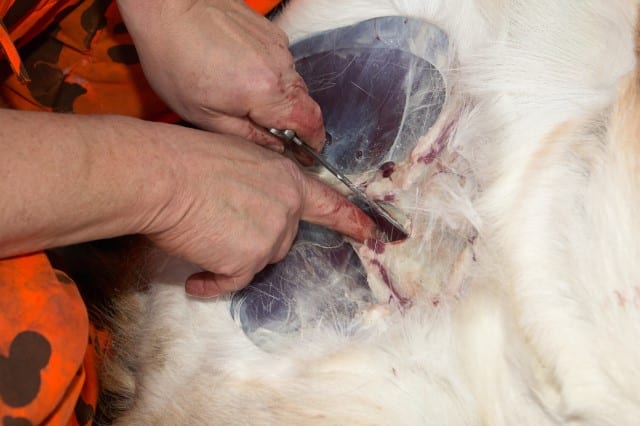
Begin by slicing the skin starting at the anus and stretching all the way to the animal’s neck.
3. Cut the abdominal wall.
Find the sternum base. This is where you should insert the knife into the abdominal wall. Pull the abdominal wall to detach it from the intestines and stomach.
Keep cutting towards the pelvis area.
It’s essential you prevent any puncturing of the intestines and stomach. Use two of your fingers to add separation in order to prevent this problem.
4. Cut the pelvis.
Use your knife or saw to sever the pelvis. This is important for letting the lower intestine pass through.
5. Slice the sternum.
Find the sternum and use your knife or saw to slice through it.
6. Cut the diaphragm.
Cut the diaphragm. As you do so, position the knife so it’s facing opposite the rib cage.
Cut through the diaphragm on each side, detaching it from the abdominal wall and rib cage.
7. Cut the windpipe and esophagus.
Locate the windpipe and esophagus, which are located directly over the heart. Cut both of them so they are completely severed.
8. Detach and pull out of the guts.
At this point, you will be able to pull out all the guts. Just pull on the windpipe.
Most hunters choose to keep the liver and heart, so put these aside and don’t let them get contaminated.
What to Do After Gutting a Deer?
After you’ve field dressed the deer, including gutting, you may want to quarter it. That means cutting the carcass into four main pieces.
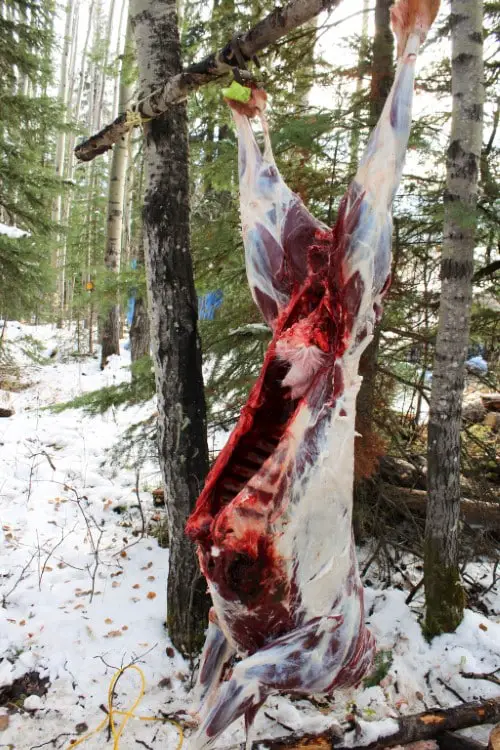
You must bring the deer to a deer processing plant as quickly as possible. The more delay there is in doing this, the greater likelihood there is that your venison will get contaminated and go bad.
For obvious reasons, this is especially true if you’re hunting during warm or hot weather. That is because the higher the temperature, the easier it is for bacteria to proliferate in the carcass.
If this happens and your venison becomes tainted, it will be dangerous to eat and you will have to dispose of it.
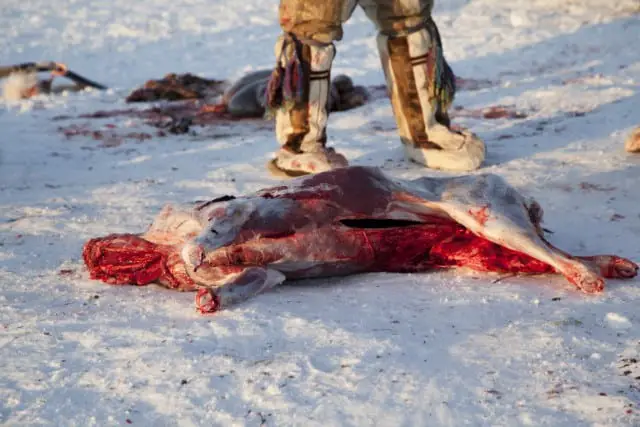
Assuming you keep your meat untainted and clean, and it is processed successfully, you will then have to correctly store and freeze it.
Like with any other kind of meat, venison needs proper refrigeration in order to stay fresh.
Transporting the Deer
Always decide which meat processor you will bring the deer to before you set out on your hunting trip.
This is important because you don’t want there to be any delay in getting the deer to your meat processor of choice.
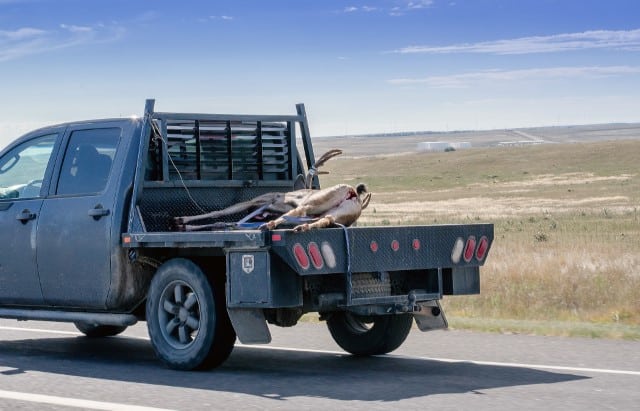
If there is a delay, there is the danger your meat will spoil and all your effort hunting down the perfect deer will be for nothing.
Many hunters use pickup trucks for transporting their deer. If you do this, make sure the truck bed is clean and free of debris that could contaminate your deer meat.
Be especially fastidious if you have skinned the deer, as the dirt will be able to directly contaminate the venison. If this happens and the bacteria proliferates, your deer meat will become dangerous to eat.
When you bring the deer to a meat processing facility, they will immediately refrigerate your deer meat and get started with the correct processing techniques.
Don’t make the common mistake of leaving a deer carcass overnight before gutting it and bringing it to the meat processor. If you do, you will probably end up with spoiled venison.
As touched on earlier, field dressing and gutting are so important because leaving organs in the carcass for too long will cause the proliferation of bad bacteria that will taint your meat.
What Should You Do With Leftover Remains?
This question worries many first-time deer hunters. Once you have finished the process of field dressing, including gutting and quartering, what do you do with the guts and entrails that are leftover?
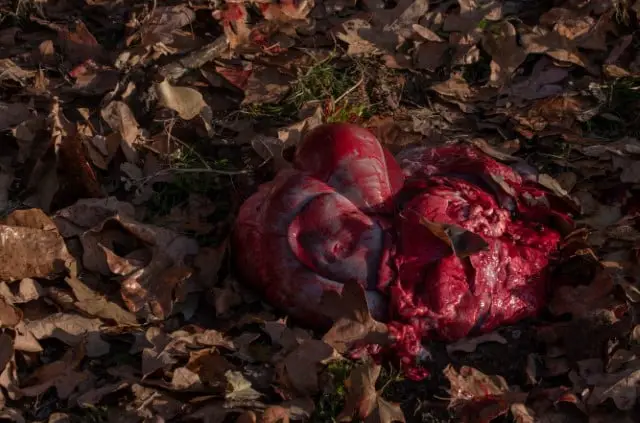
You will have kept and put aside the liver and heart, but what about the unwanted organs and other body components?
The answer to this question depends on where you are hunting. If you’re hunting somewhere with a deer camp, find out what place it has designated for disposing of unwanted deer remains.
Once you have left the deer remains there, it will be carrion and should be eaten by a wide variety of animals.
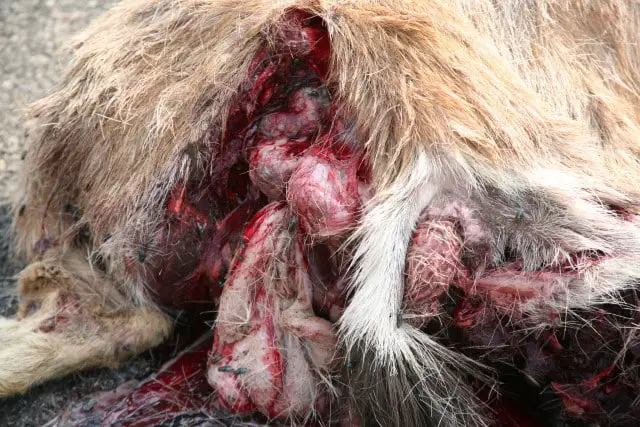
Just a few examples include coyotes, birds of prey, opossums, and more. There are also insects that feed on the carrion.
Should You Put Deer Remains in Streams?
Even if other hunters have told you this is acceptable, you should refrain from leaving deer unwanted carcasses and remains in streams.
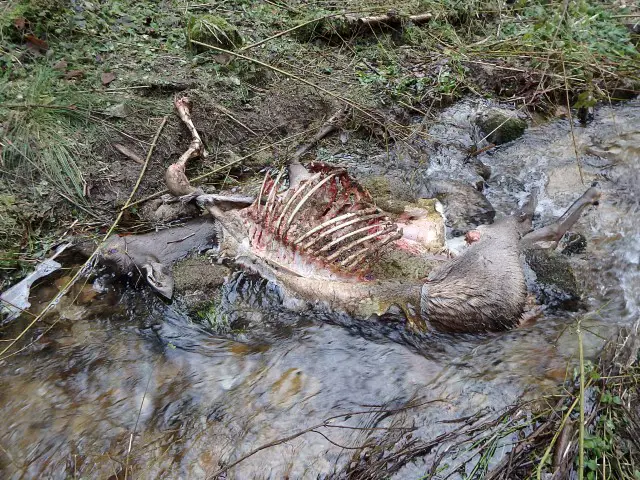
While some hunters used to believe that fish would eat the carcasses, there probably won’t be enough fish and marine creatures in the water to effectively dispose of the carcass.
And if this is the case, you have just created a significant problem for the stream and its ecosystem.
For example, think of all the bacteria that will end up in the water as the remains decompose.
This is not only dangerous and potentially harmful for the fish and other marine life in the water, the bacteris will also suck up excessive oxygen.
The water will become oxygen-depleted, making it difficult or impossible to survive for animal life in the stream.
Now You Know How to Gut a Deer
As we’ve seen here, you have to know how to properly gut a deer if you want to be a deer hunter.
Without prompt removal of the deer’s organs and entrails, your venison will become tainted, and the deer will be wasted.
Before you go deer hunting, make sure you have all your tools and equipment ready, and have definite plans for the meat processor where you will bring your deer after you field dress and gut it.
After you finish Gutting a Deer you should consider How to Quarter a Deer.

